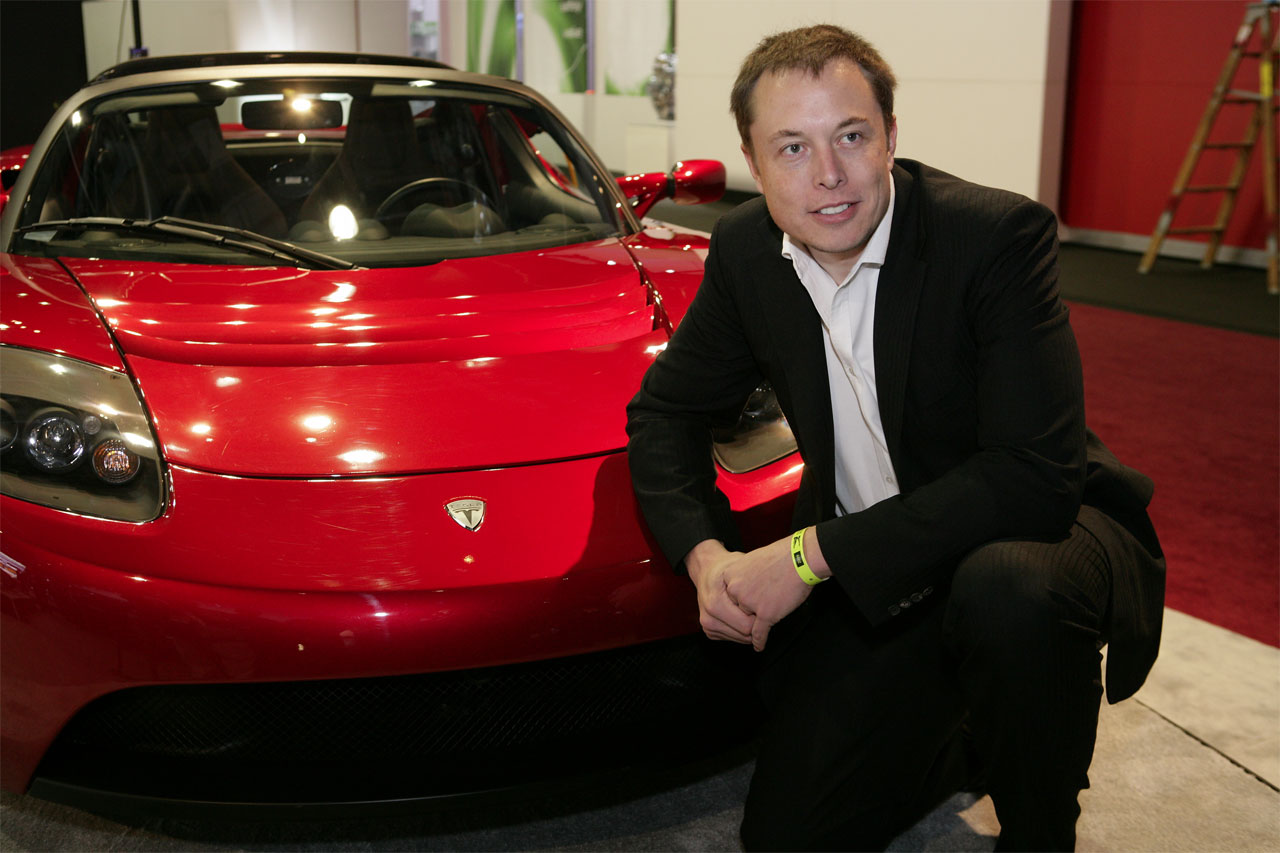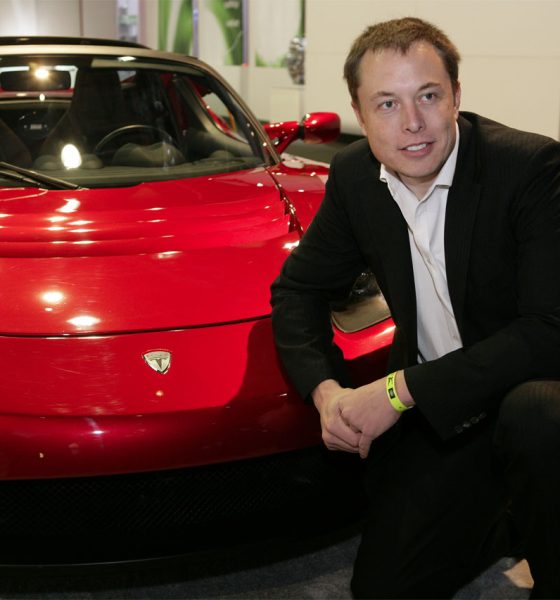

News
Tesla’s $40M loan that kept the lights on, and what it teaches all of us
Oftentimes, many of us forget to look around and realize how fortunate we are to have what we have. In times where tensions are relatively high based on the current election, a pandemic, and a string of bad luck that we have all seemed to adopt throughout 2020, there are a few appropriate moments that allow us to look back and realize how truly grateful we should be, even when things aren’t looking very promising.
A perfect example of this came earlier this week on November 3rd. On that day, just twelve short years ago, we were reminded that Tesla secured a $40 million loan that kept the lights on and gave the small and unlikely-successful automaker a chance to succeed. It was “the last hour of the last day possible,” CEO Elon Musk said on Twitter. “We were 3 days away from bankruptcy.”
The story of Musk and Tesla’s near destruction twelve years ago puts a lot into perspective. For me, it is reminiscent of an old saying, “It ain’t over until the fat lady sings.” While comical, it is true, and it shows that anything can happen while there is still time.
Musk and Tesla were trying to build a car company in arguably the most challenging time for American auto in the country’s history. Numerous companies were seeking government assistance to keep their doors open, jobs were disappearing, and the once-roaring American economy was crippled by the Financial Crisis of 2008.
Not only was it one of the worst times financially to start a car company, but Tesla wasn’t aiming to build a run-of-the-mill gas car. It wanted to completely change the tune of what a car was in the United States. Battery-powered cars were not popular, nor were they widely accepted. They were a dream of many, but never did anyone think they would be a successful passenger transportation source shortly.
Well, everyone but Elon Musk and his team of engineers at Tesla.
Musk acknowledges the hardships of the time head-on. “Extremely difficult to raise money for an electric car startup (considered super quirky back then), while stalwarts like GM & Chrysler were going bankrupt,” he added to his chain of Tweets regarding the situation. And while he was suffering to keep Tesla’s lights on, Musk concluded that the only way would be to put the last of his money into the failing company. “I put in my last money, even though I thought we would still fail. But, it was either that or certain death for Tesla.”
Fast forward a few years to 2017. Tesla is doing well, but it’s working to ramp up the mass-production efforts of the Model 3. Finally, an EV that can fit the budgets of many people worldwide, Tesla was working to create a battery-powered car that had good performance and acceptable range ratings. But it wasn’t easy, and it almost resulted in the company going bankrupt.
This is a preview from our weekly newsletter. Each week I go ‘Beyond the News’ and handcraft a special edition that includes my thoughts on the biggest stories, why it matters, and how it could impact the future.
A big thanks to our long-time supporters and new subscribers! Thank you.
When asked about the Model 3 ramp, Musk said that Tesla was “about a month” away from going broke once again. “The Model 3 ramp was extreme stress & pain for a long time — from mid-2017 to mid-2019. Production & logistics hell,” Musk added.
A few more years forward: let’s look at 2020.
Tesla is the most valuable car company in the world. It has recorded five straight profitable quarters. It is coming off of the most deliveries and production numbers for a quarter ever. It is building more Gigafactories.
Most importantly, Tesla is influencing the automotive industry. Companies that never believed in EVs are being forced to develop them. If they don’t, they’ll inevitably fall behind.
Through all the tough times and adversity that Tesla faced, it always came through. An unlikely competitor entering a market with new technology in a time when companies were hellbent on keeping their doors open by any means necessary, Tesla somehow survived.
In times where the country is almost equally divided on who they would like to run the United States for the next four years, conflicting opinions on a global pandemic are voiced regularly, and other social issues are talked about daily, it is always important to remember stories like these. With almost a negative chance of winning, Tesla somehow pulled through on two separate occasions. Patience, hard work, and a little bit of luck took the unlikely car company from the depths of Chapter 11 to superstardom in the car industry.
If this is the only bit of positivity you read this week, I truly hope it helps you realize how grateful you should be in the grand scheme of things. Sometimes, the cards just aren’t in your favor, and you have a few downswings that make you question whether what you are doing is the right thing. The dark times certainly are tough, but without darkness, then the light would mean nothing to us.
I use this newsletter to share my thoughts on what is going on in the Tesla world. If you want to talk to me directly, you can email me or reach me on Twitter. I don’t bite, be sure to reach out!

News
Tesla FSD fleet is nearing 7 billion total miles, including 2.5 billion city miles
As can be seen on Tesla’s official FSD webpage, vehicles equipped with the system have now navigated over 6.99 billion miles.

Tesla’s Full Self-Driving (Supervised) fleet is closing in on almost 7 billion total miles driven, as per data posted by the company on its official FSD webpage.
These figures hint at the massive scale of data fueling Tesla’s rapid FSD improvements, which have been quite notable as of late.
FSD mileage milestones
As can be seen on Tesla’s official FSD webpage, vehicles equipped with the system have now navigated over 6.99 billion miles. Tesla owner and avid FSD tester Whole Mars Catalog also shared a screenshot indicating that from the nearly 7 billion miles traveled by the FSD fleet, more than 2.5 billion miles were driven inside cities.
City miles are particularly valuable for complex urban scenarios like unprotected turns, pedestrian interactions, and traffic lights. This is also the difference-maker for FSD, as only complex solutions, such as Waymo’s self-driving taxis, operate similarly on inner-city streets. And even then, incidents such as the San Francisco blackouts have proven challenging for sensor-rich vehicles like Waymos.
Tesla’s data edge
Tesla has a number of advantages in the autonomous vehicle sector, one of which is the size of its fleet and the number of vehicles training FSD on real-world roads. Tesla’s nearly 7 billion FSD miles then allow the company to roll out updates that make its vehicles behave like they are being driven by experienced drivers, even if they are operating on their own.
So notable are Tesla’s improvements to FSD that NVIDIA Director of Robotics Jim Fan, after experiencing FSD v14, noted that the system is the first AI that passes what he described as a “Physical Turing Test.”
“Despite knowing exactly how robot learning works, I still find it magical watching the steering wheel turn by itself. First it feels surreal, next it becomes routine. Then, like the smartphone, taking it away actively hurts. This is how humanity gets rewired and glued to god-like technologies,” Fan wrote in a post on X.
News
Tesla starts showing how FSD will change lives in Europe
Local officials tested the system on narrow country roads and were impressed by FSD’s smooth, human-like driving, with some calling the service a game-changer for everyday life in areas that are far from urban centers.

Tesla has launched Europe’s first public shuttle service using Full Self-Driving (Supervised) in the rural Eifelkreis Bitburg-Prüm region of Germany, demonstrating how the technology can restore independence and mobility for people who struggle with limited transport options.
Local officials tested the system on narrow country roads and were impressed by FSD’s smooth, human-like driving, with some calling the service a game-changer for everyday life in areas that are far from urban centers.
Officials see real impact on rural residents
Arzfeld Mayor Johannes Kuhl and District Administrator Andreas Kruppert personally tested the Tesla shuttle service. This allowed them to see just how well FSD navigated winding lanes and rural roads confidently. Kruppert said, “Autonomous driving sounds like science fiction to many, but we simply see here that it works totally well in rural regions too.” Kuhl, for his part, also noted that FSD “feels like a very experienced driver.”
The pilot complements the area’s “Citizen Bus” program, which provides on-demand rides for elderly residents who can no longer drive themselves. Tesla Europe shared a video of a demonstration of the service, highlighting how FSD gives people their freedom back, even in places where public transport is not as prevalent.
What the Ministry for Economic Affairs and Transport says
Rhineland-Palatinate’s Minister Daniela Schmitt supported the project, praising the collaboration that made this “first of its kind in Europe” possible. As per the ministry, the rural rollout for the service shows FSD’s potential beyond major cities, and it delivers tangible benefits like grocery runs, doctor visits, and social connections for isolated residents.
“Reliable and flexible mobility is especially vital in rural areas. With the launch of a shuttle service using self-driving vehicles (FSD supervised) by Tesla in the Eifelkreis Bitburg-Prüm, an innovative pilot project is now getting underway that complements local community bus services. It is the first project of its kind in Europe.
“The result is a real gain for rural mobility: greater accessibility, more flexibility and tangible benefits for everyday life. A strong signal for innovation, cooperation and future-oriented mobility beyond urban centers,” the ministry wrote in a LinkedIn post.
News
Tesla China quietly posts Robotaxi-related job listing
Tesla China is currently seeking a Low Voltage Electrical Engineer to work on circuit board design for the company’s autonomous vehicles.

Tesla has posted a new job listing in Shanghai explicitly tied to its Robotaxi program, fueling speculation that the company is preparing to launch its dedicated autonomous ride-hailing service in China.
As noted in the listing, Tesla China is currently seeking a Low Voltage Electrical Engineer to work on circuit board design for the company’s autonomous vehicles.
Robotaxi-specific role
The listing, which was shared on social media platform X by industry watcher @tslaming, suggested that Tesla China is looking to fill the role urgently. The job listing itself specifically mentions that the person hired for the role will be working on the Low Voltage Hardware team, which would design the circuit boards that would serve as the nervous system of the Robotaxi.
Key tasks for the role, as indicated in the job listing, include collaboration with PCB layout, firmware, mechanical, program management, and validation teams, among other responsibilities. The role is based in Shanghai.
China Robotaxi launch
China represents a massive potential market for robotaxis, with its dense urban centers and supportive policies in select cities. Tesla has limited permission to roll out FSD in the country, though despite this, its vehicles have been hailed as among the best in the market when it comes to autonomous features. So far, at least, it appears that China supports Tesla’s FSD and Robotaxi rollout.
This was hinted at in November, when Tesla brought the Cybercab to the 8th China International Import Expo (CIIE) in Shanghai, marking the first time that the autonomous two-seater was brought to the Asia-Pacific region. The vehicle, despite not having a release date in China, received a significant amount of interest among the event’s attendees.








